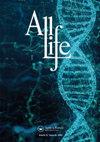Relative risk factors of nerve root sedimentation sign (SedSign) in patients with severe central lumbar spinal stenosis (LSS)
IF 1.1
4区 综合性期刊
Q3 MULTIDISCIPLINARY SCIENCES
引用次数: 0
Abstract
The incidence of nerve root sedimentation sign (SedSign) was evaluated to explore potential pathogenesis in patients with severe lumbar spinal stenosis (LSS). In a total of 209 patients with severe LSS, 290 intervertebral levels were narrow, among which 248 showed a positive SedSign, giving a prevalence of 85.52%. Those levels with a positive SedSign were further analyzed relative to those with a negative SedSign. There was no significant difference between the two groups for the cross-sectional area (CSA) or the posteroanterior diameter (PAD). In contrast, there was a significant difference between the groups for the grade of degenerative facet joint (DFJ) (p < 0.05), the thickness of ligamentum flavum (TLF) (p < 0.01), and the cross-sectional area difference (CSAD) (p < 0.01). In addition, receiver operating characteristic (ROC) curves were used to identify associated factors. The area under the ROC curve for PAD was 0.608 (p < 0.05), for DFJ was 0.634 (p < 0.05), for TLF was 0.74 (p < 0.01), and for CSAD was 0.911 (p < 0.01). In summary, a positive SedSign has notable advantages in assisting with the diagnosis of severe LSS. Compression of the dural sac from the rear may be the main risk factors of a positive SedSign.重度中枢性腰椎管狭窄症(LSS)患者神经根沉降征(SedSign)的相关危险因素分析
评估神经根沉降征(SedSign)的发生率,探讨严重腰椎管狭窄症(LSS)患者的潜在发病机制。209例重度LSS患者中,290例椎间节段狭窄,其中248例SedSign阳性,患病率为85.52%。与SedSign阴性的水平相比,进一步分析SedSign阳性的水平。两组间的横截面积(CSA)和后前径(PAD)无显著差异。两组间退行性关节突关节(DFJ)等级(p < 0.05)、黄韧带(TLF)厚度(p < 0.01)、横截面积差(CSAD) (p < 0.01)差异均有统计学意义。此外,采用受试者工作特征(ROC)曲线确定相关因素。PAD的ROC曲线下面积为0.608 (p < 0.05), DFJ为0.634 (p < 0.05), TLF为0.74 (p < 0.01), CSAD为0.911 (p < 0.01)。综上所述,SedSign阳性在协助诊断严重LSS方面具有显著优势。硬膜囊后部受压可能是SedSign阳性的主要危险因素。
本文章由计算机程序翻译,如有差异,请以英文原文为准。
求助全文
约1分钟内获得全文
求助全文

 求助内容:
求助内容: 应助结果提醒方式:
应助结果提醒方式:


